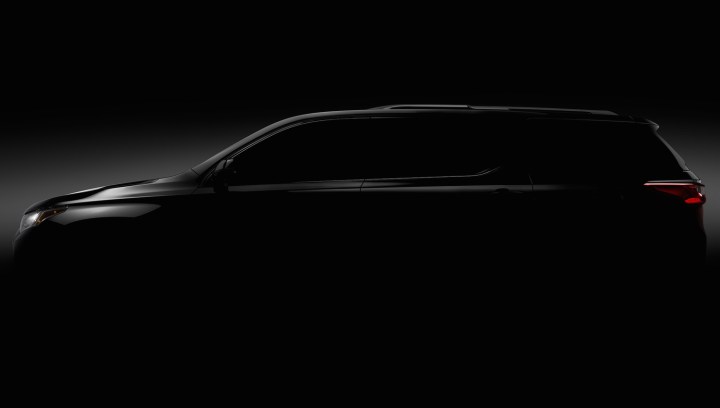
For its home auto show, General Motors will reveal the 2018 Chevrolet Traverse, a much-needed redesign of Chevy’s midsize crossover. The current Traverse is one of the oldest vehicles in Chevy’s lineup, with a design that dates back to 2008. Competing with family haulers like the Honda Pilot and Toyota Highlander, the Traverse also a very important vehicle for the Bowtie brand in this age of skyrocketing SUV popularity.
Chevy promises a “bold and refined design with seating for up to eight passengers,” but is keeping details under wraps for now. The Traverse will feature “D-Optic” headlights that Chevy claims provide better lighting quality than other systems, and the automaker says it is aiming for segment-topping third-row legroom and cargo space.
Like the current Traverse, the 2018 model will share a platform with the GMC Acadia. That means the Chevy will get the same upgrades as the redesigned Acadia that debuted at the 2016 Detroit Auto Show. At the time, GMC said the new platform cut around 700 pounds compared to the previous Acadia, and it’s likely the 2018 Traverse will attain similar weight savings.
Expect GM’s usual suite of tech features, including OnStar 4G LTE with a built-in Wi-Fi hot spot that can support up to seven devices, and an infotainment system that supports Apple CarPlay and Android Auto. The exterior and interior design may borrow some cues from the smaller 2018 Chevy Equinox, which was unveiled in September.
The 2018 Chevrolet Traverse will make its public debut at the 2017 Detroit Auto Show in January. GM will likely follow it up with an updated Buick Enclave based on the same new platform used by the Traverse and Acadia.
Editors' Recommendations
- Affordable is not enough. Here’s what Chevy’s new Bolt needs to nail
- New Hyundai Ioniq electric vehicle gets big boosts in range and horsepower
- 2021 Aston Martin DBX is perfect for a 00 agent with a family
- Everything to get excited about at 2019 LA Auto Show
- Volkswagen aims for value with its updated 2020 Passat sedan


